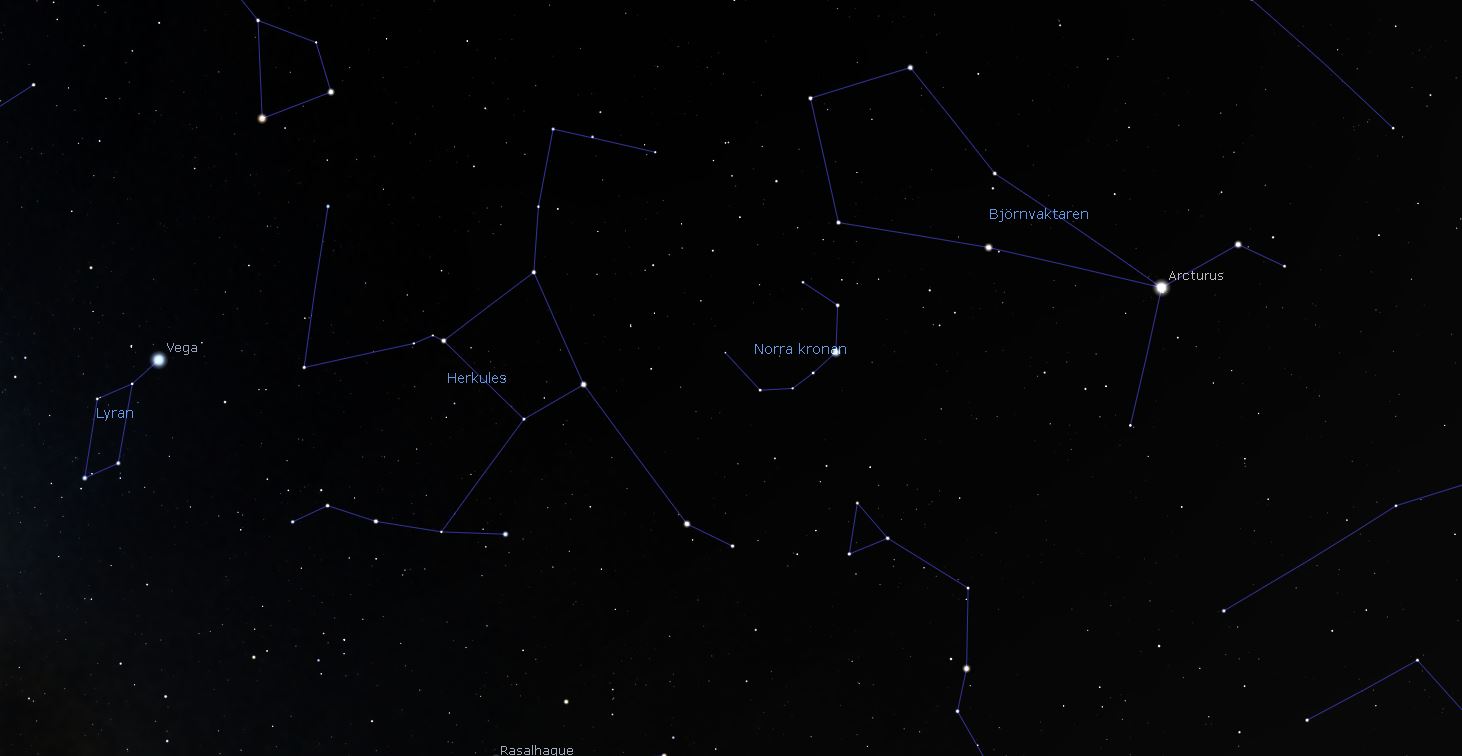Corona Borealis is one of few constellations that can be observed in the field of view of a pair of binoculars. It is also known by its name “the Northern Crown” as it looks like a king’s crown.
The constellation has had its form for millennia as it was the Greek astronomer Ptolemais who gave its Latin name (Corona Borealis) almost 2000 years ago. He added it to the list of 48 constellations. Today there are 88 recognized constellations on the Northern and Southern hemispheres.

Picture 1 Corona Borealis has seven main stars in the form of a crown on the dark sky. It is not a coincidence that the constellation is a part of ancient mythologies all around the world.
Corona Borealis is easy to find between the stars Vega (the brightest star in the constellation of Lyra) and Arcturus (in the constellation Boötes). A starry night in May, close to midnight, look to the southeast and you find the stars Vega and Arcturus (see the map in Picture 2).
Almost in between the two bright stars you will see the Northern Crown, laying “upside down”, with the opening towards Zenith.
The distance between the outer stars in the crown itself is just over 7 degrees, which means you can see the main stars in a pair of binoculars with a large field of view. A suitable pair of binoculars would be Focus Handy 7x50, that has exactly 7 degrees field of view.
The constellation includes a lot of space and stars outside the crown itself. But there are very few observable galaxies and other deep sky objects to be found. The brightest galaxies in Corona Borealis have a magnitude around 14, which requires a large telescope to be seen.
Instead, Corona Borealis contains a few remarkable variable stars. The two most spectacular are two types of novae:
T Coronae Borealis is a recurring nova. Normally varying between 10,6 and 9,9 in magnitude (i.e. it can be observed with a pair of binoculars) with a few months cycle. In modern times (1866 and 1946) it has burst as nova, after material has been transferred from a Red Giant to the White Dwarf in this binary star. At a critical point, a fusion reaction is created in the Dwarf star which lights up the sky. At the 1866 nova explosion, the magnitude became as bright as 2.0, which made it to one of the brightest stars on the sky for a short time.
R Coronae Borealis is another rare type of variable stars. Normally the magnitude varies between 6 and 7, which makes it easy to follow in a pair of binoculars or a small telescope. With irregular intervals, the magnitude suddenly drops down to between 10 and 14. The star’s unusual behavior was first observed in the 18th century and has been closely followed since then, by both professional and amateur astronomers. Scientists are still not sure what the reason is for this sudden drop of magnitude.
The maps are made with the freeware Stellarium.

Picture 2 Northern Crown (Corona Borealis) is a small constellation between Hercules and Boötes. In May it is easily observed in Southeast on the night sky. Source: Stellarium.